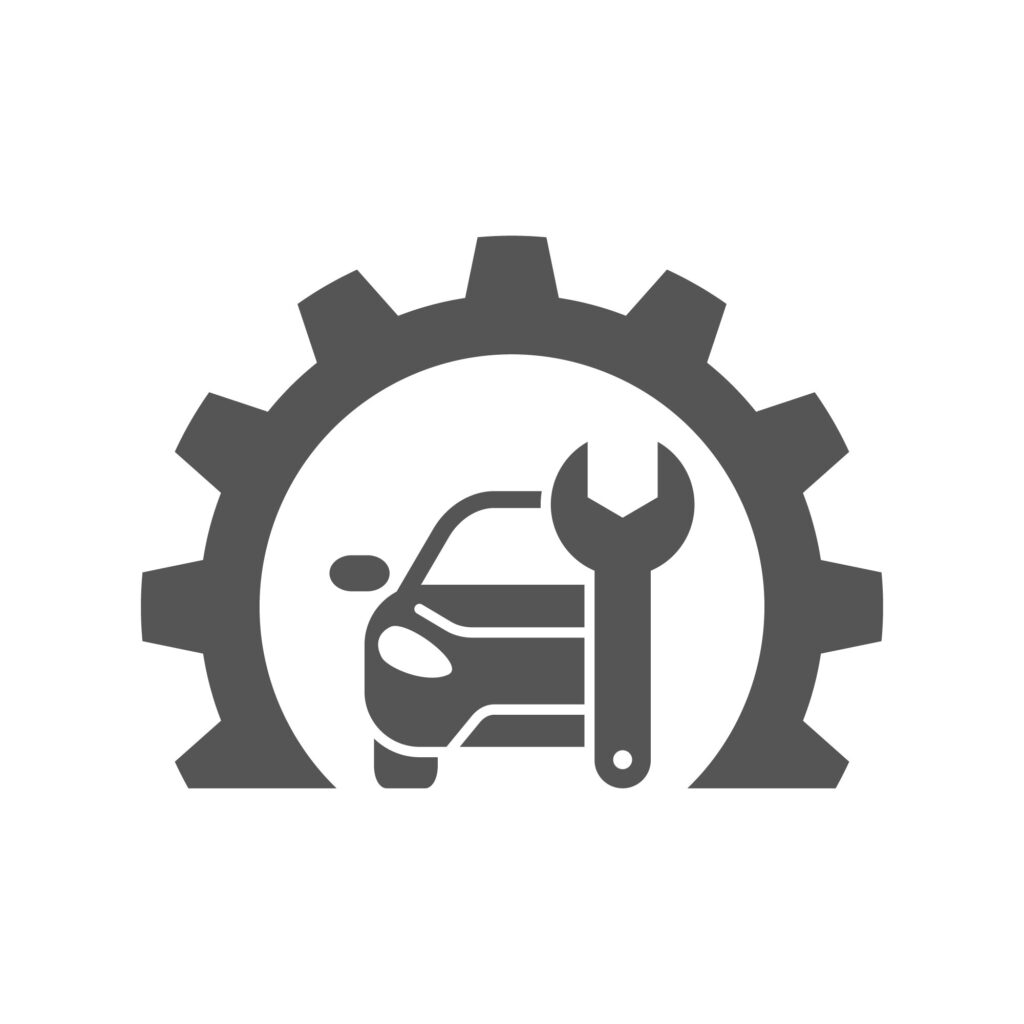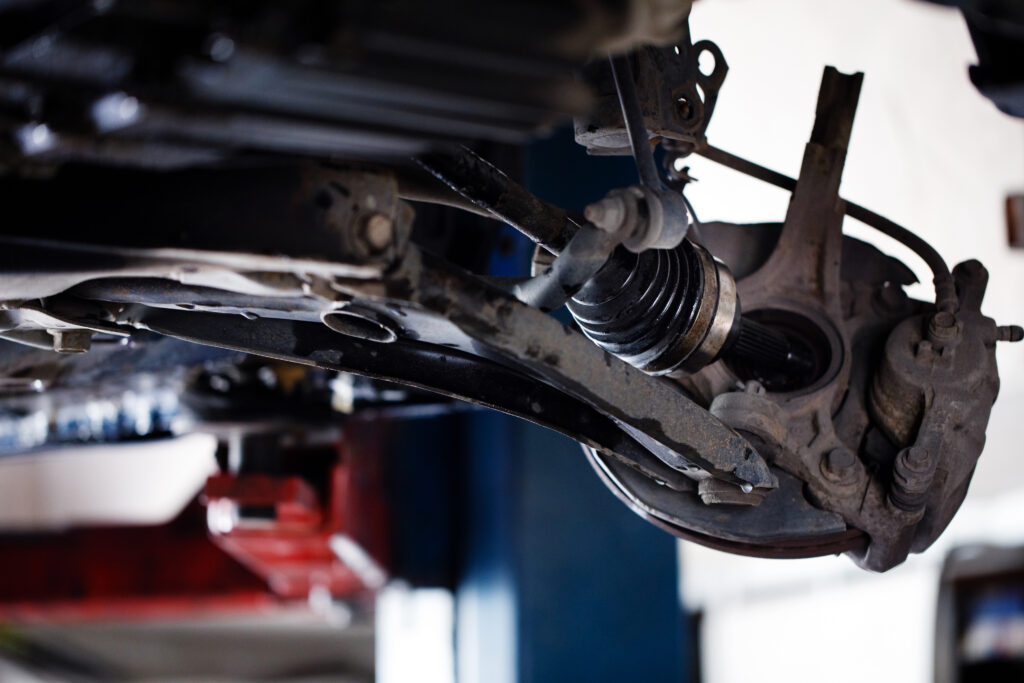Typical malfunctions of suspension

Suspension malfunction – it can happen to almost every driver. Sooner or later. Typical problems with suspension appear in a few- and several- years old cars. They can be found in city cars, compact ones and luxury limousines. That is why each and every driver should know what are the typical malfunctions of suspension systems and what are their symptoms. All that to be able to react quickly. As driving a car with broken suspension is simply dangerous.
Vehicle suspension is a complicated construction. It is responsible for proper steering of the wheels, stability and comfort of driving. Multiple elements compose the suspension system, having to cooperate with one another perfectly. It is enough just for one element to stop working properly, as a result of wear and tear or mechanical damage, and the problems begin. As the suspension system is a closed system of combined vessels, malfunction of one element speeds up the wear of other ones.
Damage of the suspension may happen gradually, but may also appear suddenly. It is enough to drive into a large hole in the road with bigger speed.
Why do we experience malfunctions of vehicle suspension?
Elements of the suspension system are not eternal. Rubber is a subject of ageing process. Metal can be attacked by process of corrosion. All the parts have a particular level of robustness to mechanical damages. As we have already mentioned before, a malfunction of one element has negative influence on other elements. Problems (cumulation of damages) can be caused by service and maintenance negligence, e.g. not properly adjusted wheel alignment and toe-in. Improper assembly of suspension parts can also cause damages. A problem can also result from assembling only one new element (e.g. one track control arm) instead of two, on both sides.
Suspension damages can also be a result of a car crash. When we experience serious damages of car underbody, even the best garages may not be able to restore full functionality of the suspension - also after replacing all the old parts with new ones.
Durability of a suspension system also depends much on the quality of its elements. Parts used for the first assembly feature the greatest durability. Because of many reasons, e.g. because they are perfectly aligned with other brand new, top quality elements and parts.
Branded spare parts and aftermarket parts meeting the GVO directive also feature high durability, being manufactured in line with European standards and ensuring proper operation of the whole system. REINHOCH spare parts meet such standards, as they are manufactured in most modern, automated factories, in line with standards in force, and are a subject to multi-level quality control during production.
Consequences of suspension failure
Malfunction of a suspension results in a series of negative consequences. First and foremost, the level of safety is much decreased. The car needs more and more often correction of riding line. All this because the car is losing steerability, i.e. the possibility of taking a proper direction of driving and keeping the riding line, set by the driver with a steering wheel. A car with a broken suspension features less and less stability. After a sudden manoeuvre, a car has greater problem with getting back to the direction of driving. Malfunction of shock absorbers results in loosing traction. This in turn, extends the braking distance and more often launches the ABS system, even at gentle braking. Uneven (not typical) wear of tyres appears. Some of the malfunctions of the suspension system make it completely impossible to use a car. Leakage in hydropneumatics and air (pneumatic) suspension systems.
Suspension malfunctions also result in substantial decrease in comfort of driving - noise and worse absorption of road bumps.
Typical malfunctions of suspension - how to recognise them?
Failures of vehicle suspension should be noticed by the driver himself. A car with a broken suspension starts behaving differently when driving. Various noises begin to appear, coming from under the car. Wear and tear of individual elements and parts of the suspension system should be noticed also during the annual MOT check. Should one suspect any damage to the suspension, it is worth visiting a control station, to determine the cause of the problems.

What should one keep in mind? Suspension parts are to be replaced in pairs. Even when only one part has been damaged, on one side of the vehicle. This applies to e.g. shock absorbers, track control arms, stabilizer links, etc. Each and every repair of a suspension system requires control and adjustment of wheel alignment.
Stabilizer links are the cheapest and at the same time the most often breaking parts of suspension system. They connect the stabilizer with track control arm or with MacPherson column. They have great influence on the safety of driving when cornering. Ball joints are parts of stabilizer links, and they are the most often damaged in this part of the system. Symptoms of damage are knocks from the suspension appearing when driving on uneven surface.
Stabilizer bushes are a part of assembly clamps fitting the stabilizers to body of a car. Symptoms of malfunction of a stabilizer bush are noise and squeaks coming from the front axle when driving on uneven surfaces. They usually need to be replaced after having driven several thousand kilometres.

Track control arms are one of the most important parts of a suspension in modern cars. They are responsible for proper driving of individual wheels. The better and the more comfortable a suspension is, the more links it has (that is why we call it a multi-link suspension) They are composed of metal-rubber sleeves (control arm silent blocks) and ball joints. In case of a damage, in some types of track control arms it is possible to replace only the sleeves or ball joints. There are also track control arms which are to be replaced as the whole element. Even if in some model it is possible to replace only sleeves of joints, it is worth checking the price of the complete track control arm. It may turn out that changing only sleeves, because of high cost of work, is simply not cost effective. The control arms themselves may also be corroded. In case of a crash, they might be bent. Track control arm silent blocks (metal - rubber sleeves, or silent blocks) are joints, thanks to which a track control arm can move. Damage to that element can have various symptoms. These might be noises when driving on uneven surfaces, squeaks, rattling when starting to drive and worse driving.
Track control arm ball joint connects track control arm with wheel knuckle. Symptoms of a ball joint malfunction are noticeably worse driving and noise - most often knocks. Neglecting these symptoms may have tragic results. When driving, a broken rubber ball joint may crack and result in disconnecting one of the wheels.
Torsion beams are a really popular solution, used in rear axle suspension of city, compact and SUV cars. The element which is most often damaged in torsion beams are the metal-rubber bushings, by which the beam is attached to the body of a car. The most popular symptom of malfunction of bushings is noise and knocks when driving on uneven surfaces. There are also other problems, like worse driving.
Torsion beams, assembled in French cars experience other problems. Here the most popular malfunction is broken needle bearing. Symptoms of torsion beam malfunction in French cars are: noise when driving (knocks), unnatural tilt of rear wheels towards the body of a car, or tilting the whole car towards one side.
Hydropneumatics suspension malfunction symptoms (used in e.g. Citroen) are: hard work of the suspension, lowering front or rear part of a car.
Pneumatic suspension malfunction symptoms (use in the most luxurious premium class cars) are: continuous work of a compressor, increased fuel consumption, and also lowering vehicle and no possibility of increasing its ground clearance.
All the malfunctions of suspension must be repaired as soon as possible. Driving with broken suspension if playing with one’s own safety. And also, as we have already mentioned, a broken element causes damages to other elements of the system. And this results in much increased cost of repair.